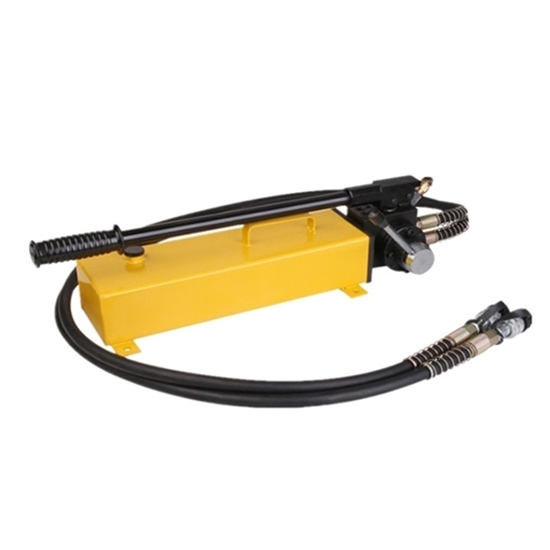Hydraulic Hand Pump Basics
Hydraulic hand pumps play an important role in every industry that requires testing and calibration of pressure instruments such as pressure transmitters, gauges and switches. From energy production and healthcare to construction and wastewater management, they perform a very necessary function that ultimately helps keep our global economy running safely and efficiently. With such a wide range of uses, there isn't one hydraulic hand pump can meet the needs of all applications. So, in this article we'll learn about the basic functions of a hydraulic hand pump and outline some of its most important features.
What is a hydraulic hand pump?
Hydraulic hand pumps convert mechanical energy into hydraulic energy (a combination of pressure and flow) by delivering hydraulic fluid under pressure through directly applied manual work. The hydraulic hand pump use the simple principle of a handle providing leverage to an internal piston. The piston then forces the hydraulic fluid into the cylinder port. Water and hydraulic oil are the most common fluids, but a variety of pressure media can be used. The hydraulic pressure generated can be used to provide pressure for testing, adjustment and calibration of different types of measuring instruments. This is different from pneumatic hand pumps, which use air to generate pressure, which is a very compressible gas, rather than an incompressible fluid medium.
Hydraulic hand pumps in action
Hydraulic test pumps are ideal for applications requiring high pressures (10,000 psi or 70 MPa). They are often used with digital pressure calibrators to calibrate pressure transmitters and gauges as well as pressure switch testing and leak testing. Because they are lightweight and do not require a power source, manual hydraulic pumps are ideal for field testing situations where an electrical or compressed gas source is not available or suitable. They are particularly well suited for hazardous locations in the oil and gas industry where electric equipment is very expensive.
Three features of hydraulic hand pumps
Hydraulic hand pumps have come a long way since their humble beginnings. Today, there are a variety of styles and pressure ranges to choose from, and they are often designed to be rugged, lightweight and easy to use. However, there are some basic features of hydraulic hand pumps that are worth highlighting, especially when compared to their pneumatic counterparts.
- Efficiency - Hydraulics is one of the most efficient methods of energy transfer. Hydraulic hand pumps allow you to reach high pressure levels with ease - just squeeze the handle once or twice. Because air is compressible, reaching the same pressure level with a pneumatic pump requires more effort.
- Precision - Manual hydraulic pumps are perfect for situations that require a high degree of fine tuning. They are often designed with a fine adjustment knob that allows the operator to vary the applied pressure to within 0.01 psi or 0.069 kPa.
- Stability - Hydraulic hand pumps are typically made of cast or machined metal to limit leaks, prevent maintenance and ensure temperature and pressure stability.
Overall, hydraulic hand pumps are designed to improve the efficiency of your operation. They are available in a wide range of pump styles and flow rates, and feature different pressure options tailored to different applications.

